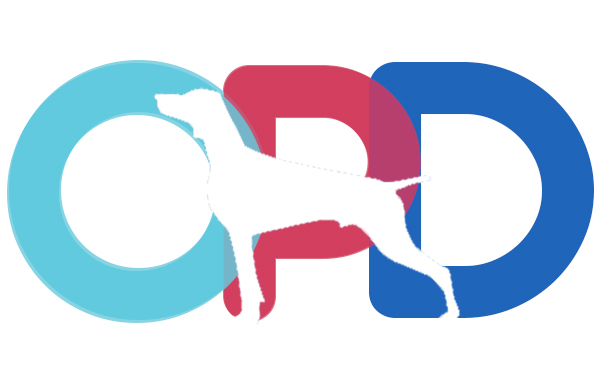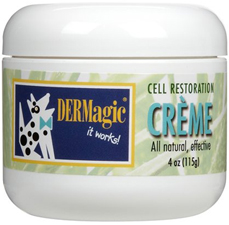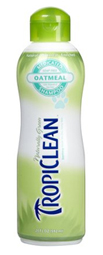Humans deal with skin issues constantly, and we have thousands of creams, rubs and medications to eliminate the issues. There are many serious skin issues that our dogs can become afflicted with as well, but because of their thick coats, it’s slightly more difficult to diagnose the exact skin problem.
Let’s dive into the details…
- Dog Skin Allergy & Rash Symptoms & Characteristics
- Causes
- Natural Treatments
- SLIDESHOW: Dog Rashes, Marks, Spots, Lesions and Patches
Dog Skin Rash & Allergy Symptoms
A simple dog skin rash is comparable to a human skin rash in these ways:
- We’re not always sure why it’s there
- It can pop up on the skin within a matter of seconds
- It can be very itchy and obnoxious
- It can be cured quite easily with the right treatment
First, take a close look at the area you have noted to be a possible rash on your dog’s skin…
Pimples?
Does your dog apear to have pimples? Acne may be the culprit.
See our Canine Acne page to determine whether your pooch has pimple problems and to learn how to treat them naturally at home.
- Does it look red, flakey and/or slightly swollen?
- Has your dog been scratching it with his paws or nibbling on it with his teeth?
- Did it just pop up within the last few hours without any sign of additional symptoms?
If you answered ‘yes’ to these questions, the chances are quite good that your dog is dealing with a rash.
The following symptoms are also sometimes present:
- Dog itchy skin (most common symptom for a dog with a dog food allergy)
- Chronic or recurrent dog ear infection
- Hair loss
- Excessive scratching
- Hot spots
- Dog skin infections (that respond to antibiotics but reoccur after they are discontinued)
- Frequent bowel movements
It may help to see actual photos of other dogs’ skin problems along with their ultimate diagnoses…
Click here for a complete dog skin problems slideshow and click the images to jump to more detailed explanations of each photo along with our veterinarians’ responses (page will open in a new window so you can come back to finish reviewing this page).
What Causes a Dog Skin Rash?
Dog skin rashes have several instigators. Click these links for more details about each:
- Atopy
- Environmental allergies
- Dog food allergies
- Parasites such as fleas, dog ticks, dog lice and dog worms
- Bacteria, especially when a dog’s immune system has been compromised
Drug allergies may also be the cause. If your dog is taking medication, call your vet and ask whether it is safe to take them off for a few days so you can find out whether the drug is causing the problem.
Finally, the rash could be caused by an injury to your dog’s skin.
For more details about each of the above causes, see our Dog Skin Conditions page.
Natural Treatments for a Dog Skin Rash
If you are looking to provide your dog with some instant relief, here are a few natural remedies that will soothe the inflamed skin and reduce some of the itching:
- Natural Skin Salve/Spray – Many natural ingredients exist that are very effective at healing skin rashes or hot spots and calming skin irritation and discomfort including shea butter, tea tree oil, rosemary, sesame oil and aloe vera, among others. A good option to try that includes some of these is the DERMagic Cell Restoration Creme.
- Coconut oil – severe skin dryness and itchiness may be alleviated by some coconut oil soaks one time per week. Massage in some coconut oil (Nutiva’s Organic Coconut Oil is a good option) all over the areas that are dry and scaly and let it soak in for 4 to 6 hours. If your dog is still greasy after 4 to 6 hours, shampoo him with Palmolive dish soap to remove the excess oil. If the oil has all soaked into his skin, use a baby shampoo.
- Aloe Vera cream or gel – Aloe is natural healer that is used to treat various skin issues on humans and animals alike. You can apply the aloe to the irritated skin either directly from the plant or in a gel/lotion form sold in stores.
- Milk of Magnesia – this soothing substance has been found to benefit itchy, dry and irritated skin. Just pour a little onto a cotton ball and apply to the skin of your dog.
- Oatmeal Shampoo – Tropiclean Oatmeal Shampoo is great for dogs prone to skin rashes and goes a long way toward releif from itching.
- Baking Soda – Mixing baking soda with water and applying it to the skin of your dog may provide much needed quick relief from itching.
- Apple cider vinegar is sometimes useful in the skin fold areas under the neck, armpits and groin if there is any yeast or fungus associated with the formation of ‘elephant’ skin. You can apply it two to three times per week with a wash cloth to the affected areas. See our Benefits of Apple Cider Vinegar page for more information.
- Consider alternative medicine for dogs to avoid the negative side-effects of medication – skin rashes are only a minor side-effect among many more that are longer term and more severe.
Remember: Keep your dog from intense scratching, licking or biting of the skin spot. This could cause bleeding and possibly infection, so don’t wait to provide some relief!
For the rest of your preventive and natural treatment options, see our Dog Skin Conditions page. Your at-home dog treatment options discussed there include…
- Adding a preventive supplement to your dog’s diet
- Dog fasting
- Additional diet supplementation options
- How to clean and treat the effected area
As mentioned above, you can also scroll through a lengthy photo slideshow and related dog skin questions from other visitors here: Ask a Vet Online Library – Dog Skin Rashes, Marks, Spots, Lesions & Patches (including itchy skin and mange) Section
Do you believe in holistic pet care? If so, please tell your friends about us. Thank you for supporting our efforts!


